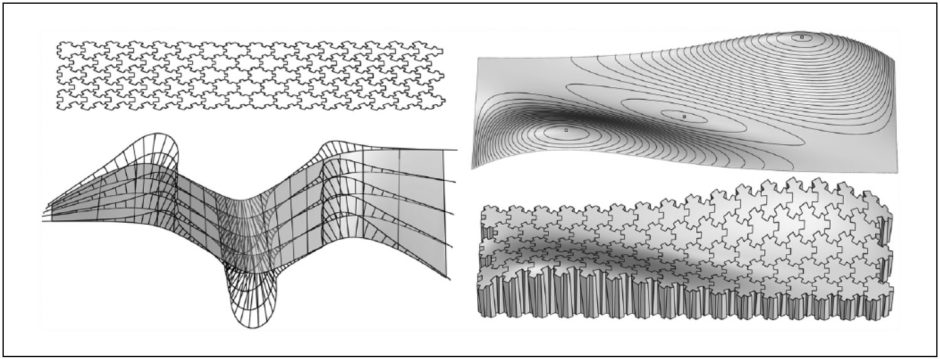Parquet Deformations Revisited
by Tuğrul Yazar | January 9, 2018 13:28
Here is the abstract of my last publication in the International Journal of Architectural Computing[1]. Parquet Deformations is an architectural studio exercise of William Huff in the 1960s. It aims to improve students’ reasoning of spatiotemporal variation by utilizing sequential shape-shifting of patterns[2]. This article examines the outcomes of this educational research from the perspective of design computing. A multilayered reading about the exercise will reveal its historical, theoretical, and artistic backgrounds. Then we explain the common structural elements and different construction approaches of Parquet Deformations along with a novel design and analysis method. The proposed method embeds variations of two-dimensional pattern deformations on a third dimension. It enables various analyses such as the measurement of regularity and locating the attractor points. In this study, we expect to exemplify how computational thinking and new digital tools change the way designers would approach such systematic compositions.

The geometric relationships underneath pattern deformations are usually directed by two things. These are the intrinsic capacities of cells, and the deformability potentialities of underlying lattices. First, the geometric properties of a pattern itself, while the capacity to deform a pattern is highly related to the setting and properties. Then, forces of the n-dimensional space it exists in. From this perspective, we can describe a pattern deformation as an equilibrium. This is between the intrinsic deformability capacities of a geometric pattern; and an external capacity. Scripting languages introduce designers to algorithmic methods such as component-based design, attractor objects, and force fields.
The new generation of architects develops or transfers such methods in design processes. This makes it possible or easier for them to control the generation, optimization, and adaptation of complex patterns.
The full paper is here[3].
- International Journal of Architectural Computing: http://journals.sagepub.com/home/jaca
- patterns: https://www.designcoding.net/tag/pattern/
- here: http://journals.sagepub.com/doi/abs/10.1177/1478077117734660
Source URL: https://www.designcoding.net/revisiting-parquet-deformations/